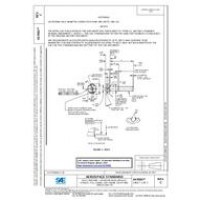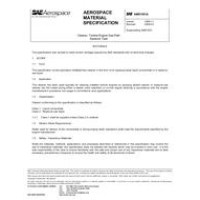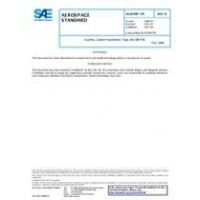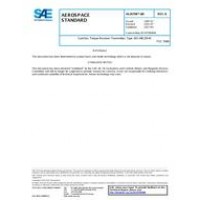This SAE Standard prescribes the procedure for making hardenability tests and recording results on shallow and medium hardening steels, but not deep hardening steels that will normally air harden.Included are procedures using the 25 mm (1 in) standard hardenability end- quench specimen for both medium and shallow hardening steels and subsize method for bars less than 32 mm (1-1/4 in) in diameter. Methods for determining case hardenability of carburized steels are given in SAE J1975.Any hardenability test made under other conditions than those given in this document will not be deemed standard and will be subject to agreement between supplier and user. Whenever check tests are made, all laboratories concerned must arrange to use the same alternate procedure with reference to test specimen and method of grinding for hardness testing.For routine testing of the hardenability of successive heats of steel required to have hardenability within certain limits, it is sufficient to designate hardenability simply in terms of distance from the quenched end to the point at which a certain hardness is obtained. This designation may also be adequate for comparing steels of different compositions to see whether they have similar hardenability.Hardenability limits for specifying steel in this manner are obtained by measuring the hardenability of a steel which has proved satisfactory for the use intended. The hardenability test may be used in this way as an empirical test.For new components where manufacturing experience is lacking, hardenability data may be effectively used to estimate the hardness profile provided by any given steel. Attendantly, the ability to predict hardenability from chemical composition has become increasingly important when comparing various steel grades or developing new steels for specific applications. One such procedure is described in Appendix A. Other hardenability prediction methods are available from the selected references in Section 2. However, it should be emphasized that the use of any hardenability prediction procedure does not preclude the importance of conducting Jominy end-quench tests to determine the actual hardenability of any specific grade of steel.Hardenability data may be used to estimate hardnesses obtainable with any steel in new machine parts not yet in production and not similar to any parts on which production experience is available. Various hardenability application methods are described in the selected references, Section 2.1, 23 to 25. It appears none of these methods are precise, but these are often useful for estimation purposes. Final correlation on actual parts is necessary.
 PDF
PDF
All of our standards document are available in PDF (Portable Document Format), an electronic, downloadable format.You will be able to download the file in your account downloads.
 Multi-User Access
Multi-User Access
After purchasing, you have the ability to assign each license to a specific user.
 Printable
Printable
At any time, you are permitted to make printed copies for your and your members' reference use.
 PDF
PDF
 Multi-User Access
Multi-User Access
 Printable
Printable





